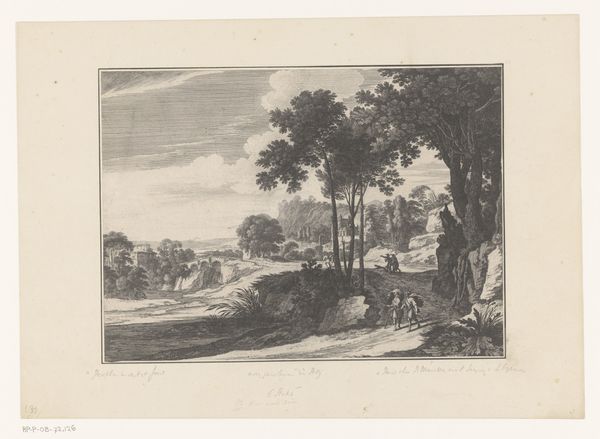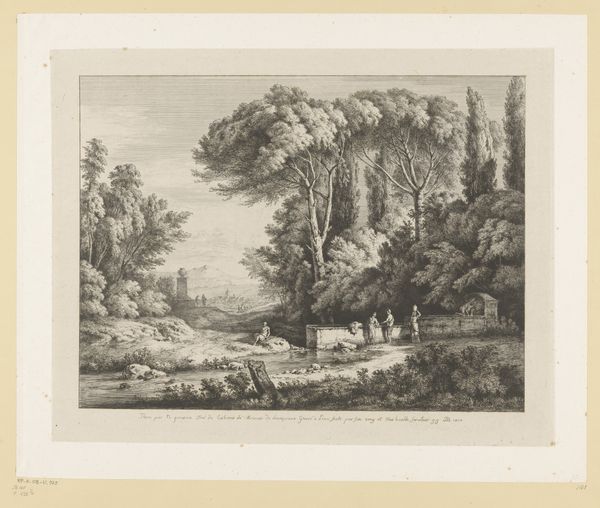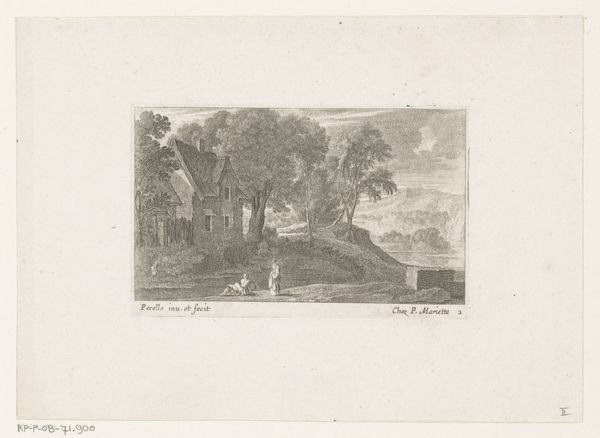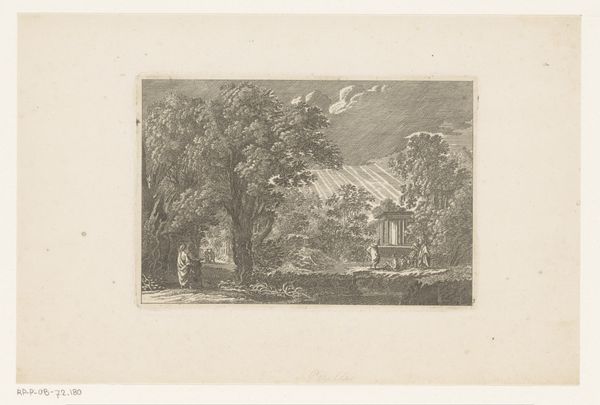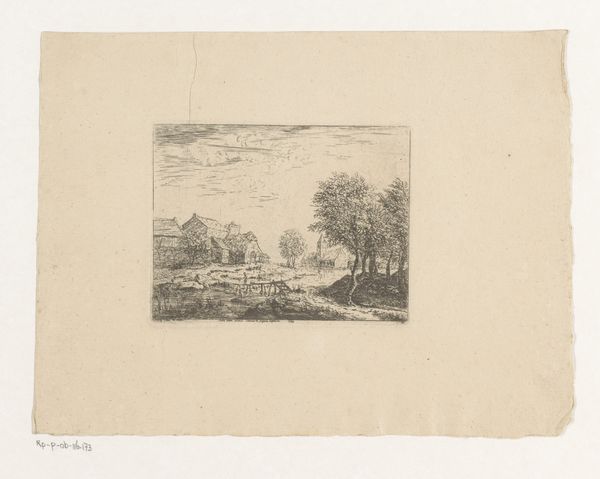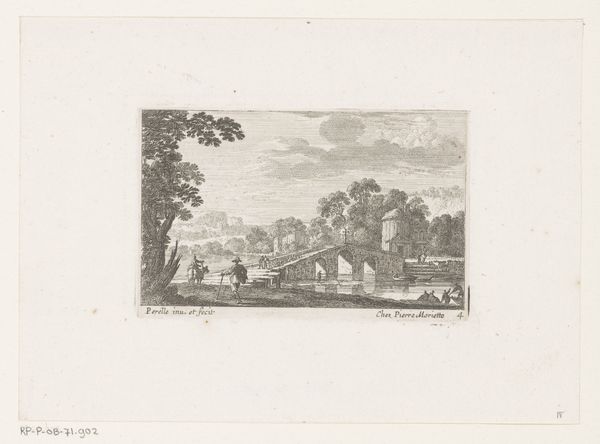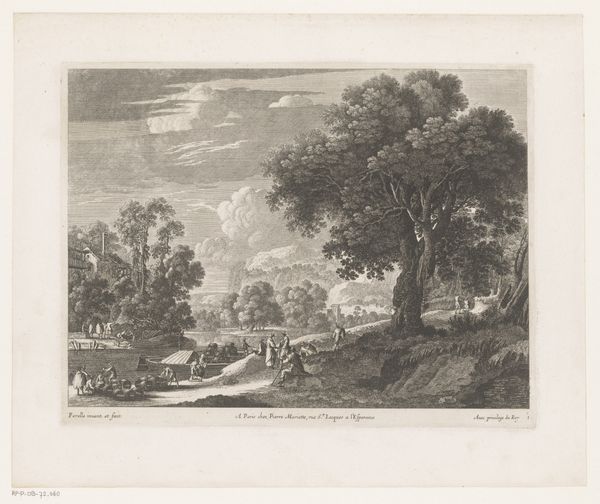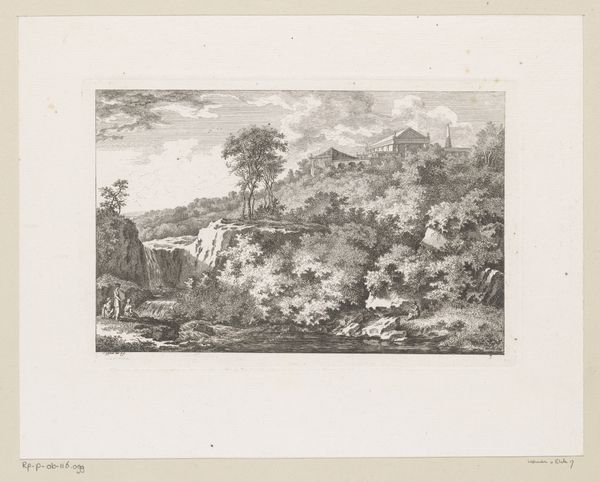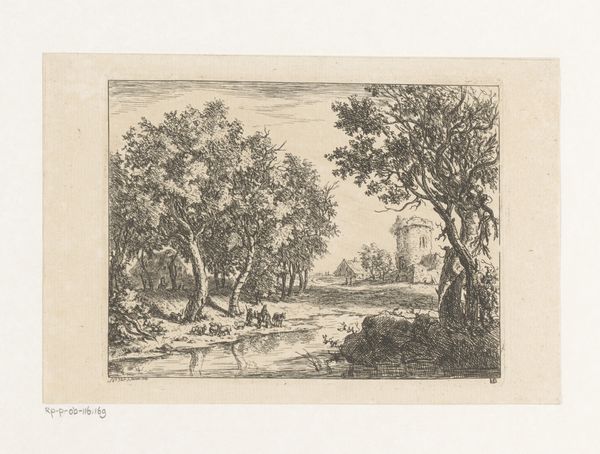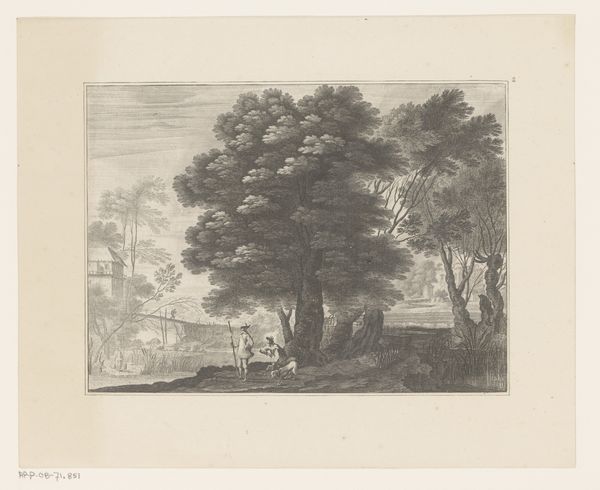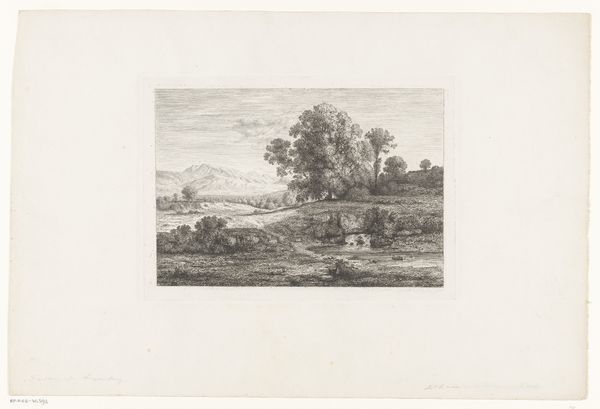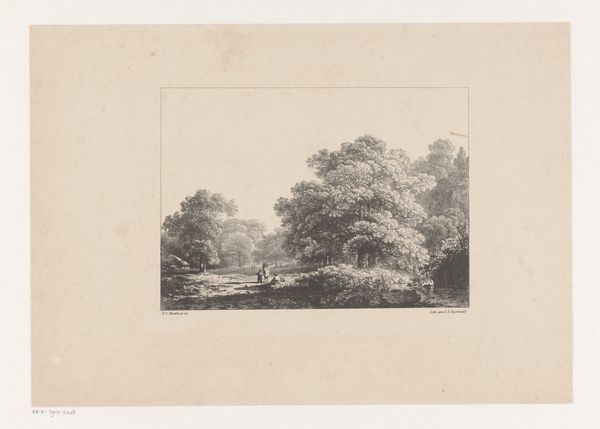
The Woman and Tambourine (Liber Studiorum, part I, plate 3) 1807
0:00
0:00
drawing, print, etching
#
drawing
# print
#
etching
#
landscape
#
figuration
#
romanticism
#
musical-instrument
Dimensions: plate: 7 1/4 x 10 9/16 in. (18.4 x 26.8 cm) sheet: 8 1/4 x 11 1/2 in. (21 x 29.2 cm)
Copyright: Public Domain
Editor: Here we have J.M.W. Turner’s etching and mezzotint from 1807, "The Woman and Tambourine." It has a beautiful, sepia-toned landscape, and what appear to be figures in classical garb in the foreground. What immediately strikes me is the way the artist uses light and shadow. What is your take on this particular image, given Turner's prolific body of work? Curator: This piece, part of Turner’s Liber Studiorum, speaks volumes about the cultural ambitions of landscape art at the time. Turner sought to elevate landscape to the level of history painting, traditionally seen as the most important genre. This print series, designed to be widely disseminated, acted as a visual manifesto, a curated selection demonstrating the expressive possibilities of landscape. Editor: A manifesto, that's interesting. How so? Curator: Consider the title itself. Why foreground the “Woman and Tambourine?” By placing figures engaging in what might be construed as leisure, or even exotic, pursuits in a classical setting, Turner gestures towards a reimagining of history itself. It subtly proposes that history isn’t just about grand battles and political figures, but also the everyday life and culture imbued within a landscape. What is your reading of that scene in relation to the background landscape and architectural details? Editor: Well, I didn't see that at all originally, but now it does feel like those foreground figures act as a kind of key to understanding the landscape's historical resonance. This wasn't just about pretty scenery. Curator: Exactly. And think about who had access to these images. These prints made art accessible beyond the elite circles of patrons and academies, shaping a wider public understanding of art and national identity. Turner wasn't simply creating art; he was consciously shaping its reception and social role. Editor: I never really thought about art that way before - I'll certainly never see Turner’s work the same way again! Curator: Nor I. Considering the image in this way gives insight to a far broader historical view, the ways it sought to disseminate an artist’s view through social constructs.
Comments
No comments
Be the first to comment and join the conversation on the ultimate creative platform.
